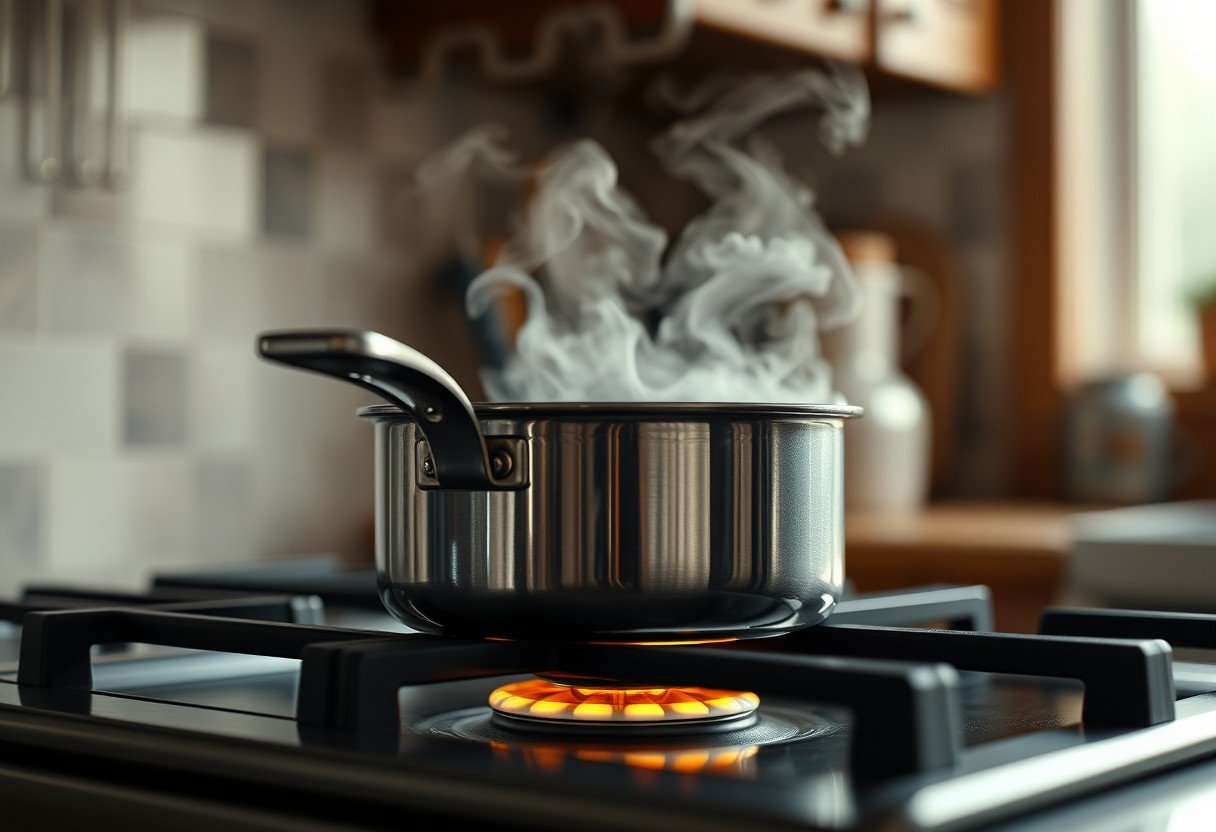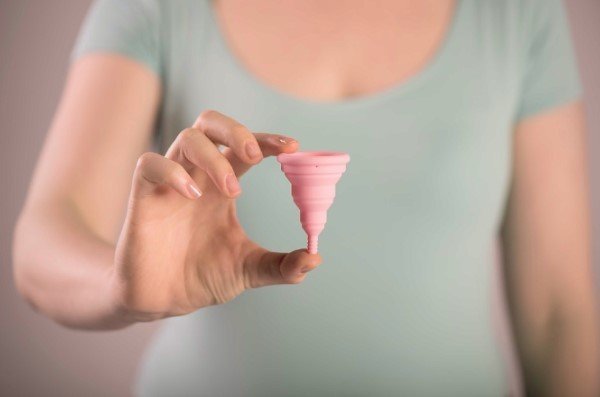Have you ever reached for a saucepan on the stove, only to quickly pull your hand back from a surprisingly hot handle? It’s a common kitchen experience that happens because of heat conduction. Heat from your stove travels through the metal of the pan and up into the handle. Understanding how this happens, what materials are best, and how design plays a role can help keep your hands safe while you cook your favorite meals.
The Science Behind a Hot Handle: Understanding Heat Conduction
The main reason your saucepan handle gets hot is due to a process called heat conduction. Think of it as heat taking a journey from a warm place to a cooler one through direct contact.
When you place your pan on a burner, the metal at the bottom heats up first. The tiny particles, or molecules, in the metal start to vibrate very quickly. These vibrating molecules bump into their neighbors, passing that energy along. This chain reaction of energy transfer is what carries heat from the main body of the pan to the handle.
This process continues until the entire object reaches a similar temperature. That’s why a pan left on the heat for a long time will have a much hotter handle than one that has only been on the stove for a minute.
Why the Material of Your Saucepan Matters
Not all materials are created equal when it comes to conducting heat. The type of material used for both the pan and its handle drastically affects how hot the handle will get. This property is known as thermal conductivity.
Metals like copper, aluminum, and stainless steel are excellent heat conductors. This is great for the main part of the pan because it allows it to heat up quickly and cook your food evenly. However, if the handle is made of the same metal, it will also get hot very fast.
To prevent burns, many manufacturers use materials that are poor heat conductors for the handles. These include:
- Silicone: A popular choice known for its excellent heat resistance and comfortable grip.
- Wood: A traditional material that stays cool but can require more care.
- Plastic (like Bakelite): A common, cost-effective insulator that keeps handles safe to touch.
Choosing cookware with handles made from these insulating materials is a simple way to increase safety in your kitchen.
How Handle Design Influences Temperature
Beyond the material, the physical design of the handle plays a huge role in keeping it cool. A thoughtfully designed handle can significantly reduce the amount of heat that reaches your hand.
Length is a simple but effective factor. A longer handle creates more distance between your hand and the hot pan, giving the heat a longer path to travel. This means it takes more time for the end of the handle to heat up.
Some designs also incorporate features specifically to block heat. You might see a hollow handle or a V-shaped split where the handle connects to the pan. These gaps create an air pocket that acts as a natural insulator, slowing down heat conduction and helping the handle stay cooler for longer.
Does Your Stove Type Make a Difference?
The type of stove you use can also change how hot your saucepan handle gets. Each heat source transfers energy in a slightly different way, which can directly impact the handle.
Gas stoves, for example, have open flames that can wrap around the bottom and sides of a pan. If the flame is too high or the pan is too small for the burner, the flames can directly heat the handle, making it hot very quickly regardless of its material.
Electric and induction cooktops offer more controlled heating. They heat the base of the pan more directly, leading to less ambient heat traveling up the sides. Induction is particularly efficient, as it uses a magnetic field to heat the pan itself, often resulting in the coolest handles.
| Stove Type | How It Heats | Impact on Handle Temperature |
|---|---|---|
| Gas | Open flame heats the base and sides | High risk of a hot handle, especially if flames are large |
| Electric Coil/Ceramic | Direct contact with a heated element | Moderate risk; heat travels mainly through the pan’s body |
| Induction | Magnetic field heats the pan directly | Lowest risk; least amount of wasted heat to warm the handle |
Simple Tips to Keep Your Hands Safe
Even with the best cookware, it’s always smart to practice safe cooking habits. Protecting yourself from burns is easy if you keep a few key tips in mind.
The most important rule is to always assume a handle might be hot. Developing this habit can prevent many common kitchen accidents. Before grabbing a pot that has been on the stove, take a moment to protect your hand.
Simple tools like oven mitts, pot holders, or even a dry kitchen towel provide a reliable barrier between your skin and a hot surface. It’s also good practice to turn pot handles inward, toward the back of the stove. This prevents them from being knocked over accidentally, especially if you have children or pets in the house.
Choosing Cookware with Cooler Handles
When you are shopping for new pots and pans, pay close attention to the handles. Investing in cookware with “cool-touch” or “stay-cool” handles can make your cooking experience much safer and more comfortable.
Look for pans with handles made of silicone, wood, or a heat-resistant composite material. Check how the handle is attached to the pan. A sturdy connection with an air gap is often a sign of a well-designed piece of cookware that prioritizes safety.
Reading product reviews can also provide real-world insight into how well the handles perform during everyday cooking. Other home cooks will often mention if the handles tend to get uncomfortably warm.
Frequently Asked Questions
Why does my metal handle get hotter than a plastic one?
Metal is an excellent conductor of heat, meaning it allows heat energy to pass through it easily. Plastic is an insulator, which means it resists the flow of heat, keeping the handle much cooler to the touch.
Can a saucepan handle get hot enough to cause a serious burn?
Yes, absolutely. A metal handle on a pan that has been simmering for a long time can reach temperatures well over 100°C (212°F), which is hot enough to cause an immediate and severe burn.
Are ‘cool-touch’ handles completely safe to touch without a mitt?
While “cool-touch” handles are designed to stay at a safe temperature during normal stovetop use, they can still get hot under certain conditions, like being used in an oven or if a gas flame directly hits them. It is always safest to use a pot holder as a precaution.
Does cooking time affect how hot the handle gets?
Yes, the longer a pan is on a heat source, the more time the heat has to conduct from the base to the handle. A quick task like scrambling eggs is less likely to heat up a handle than simmering a stew for an hour.







Leave a Comment